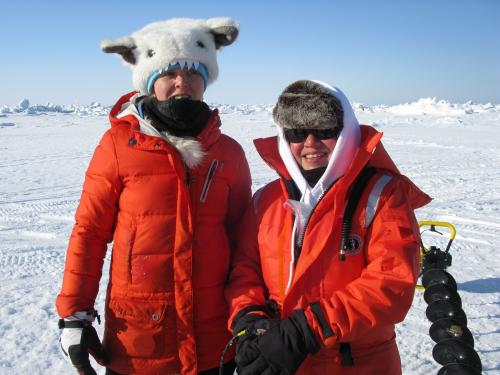
The last two days have been long and cold! The sun rose at 5:06 on the 27 and set at 11:44. Several of us, armed with cameras, set out to capture the sunset over the ocean. It’s been interesting watching the sun travel around the horizon. By mid day it’s pretty high in the sky, but it stays low on the horizon and even at sunset you just know its peeking over the rim of the horizon. Soon, it won’t set at all.
Update on the whale watch: another was brought ashore today! Yesterday Adriane and I were driving through town and we came upon a family that was cutting up some of the whale meet from the first catch on Tuesday. We asked for and were given permission to photograph them as they worked. The elder of the family explained what they were doing as they portioned out the share they were given. She identified several parts of the whale they were working on and explained how it was distributed. She also told us that their family crew was going out last night, so we wished them success in their hunt and said our goodbyes. I wonder if it was their crew that was successful?
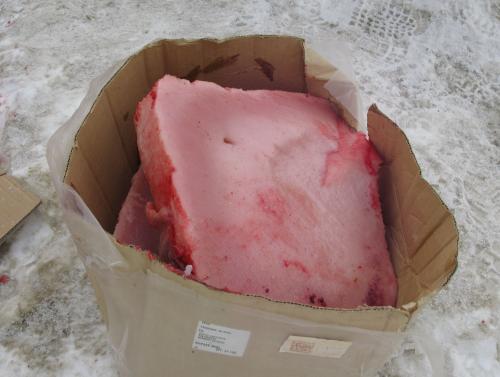
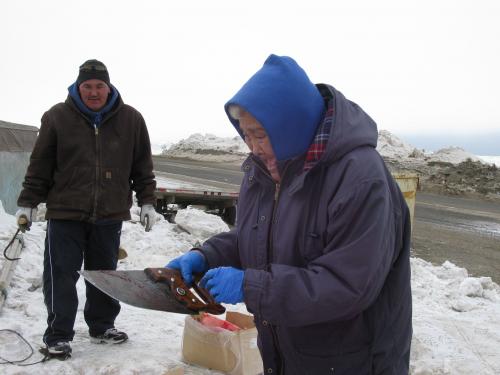
I also spent some time yesterday talking with Marc Frischer (Skidaway Institute of Oceanography) in his lab at BARC (Barrow Arctic Research Center). Marc’s work is focused on looking at the changes in gene expressions of the Arctic microbes that allows them to do what they do in response to seasonal change. I asked what changes he’s seen on this trip compared to January. He replied that he sees changes in bacterial abundance. The water looks different because there’s more material in it. The sun has “turned on the light” and the photosynthetic autotrophs (algae, phytoplankton) are undergoing a “dynamic biological period”! So, there’s a shift in dominance over the heterotrophic bacteria that has been active all year, even in the dark. By August (next sampling trip) nutrients in the water will have been depleted and photosynthesizers will die out, shifting the dominance back to the heterotrophs! One of the questions the Arctic Nitro team is trying to answer is: What will a warmer climate do to this “balance”?
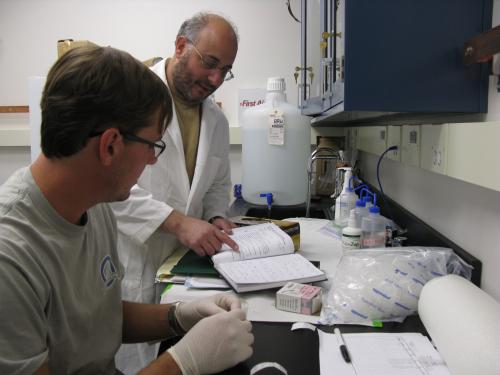
Today was our second day at ice camp. With the wind kicking in, the temp was about -17F (felt a lot colder to me!). With focused determination, the group went straight to work unloading equipment and supplies, and then disappeared into the tents to work. Adriane and I had mapped out a plan to survey under the ice with our cameras. Our UMIAQ support team was very helpful in helping us get organized. They had to use the auger to re-open the frozen camera hole before we could begin. After several mad scrambles to attach Adriane’s camera to my homemade SeaViewer pole, we were ready. It was a good day for filming and we saw some sea urchins on the floor. I was outside manning the pole and I could hear Adriane and others “wow-ing” at the images. I couldn’t wait to get back to see them myself. We worked the cameras until the very last minute but had to give it up to leave. Samples have to be taken back to the labs immediately! In the confusion of packing everything up quickly with lots of hands moving at once, the video was not saved properly!!! I didn’t know that until we returned to the hut ☹ Luckily, Adriane got footage of just under the ice- but none of the floor. We try again on Saturday!
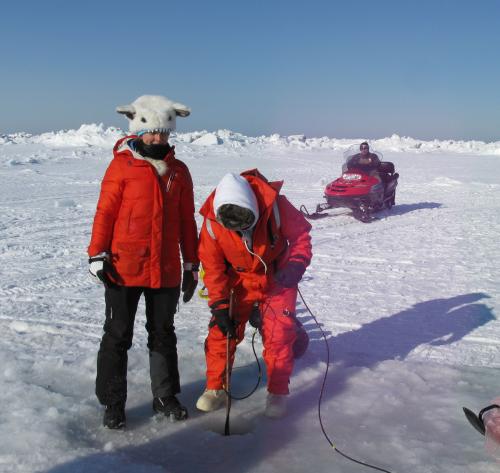
It’s almost sunset- goodnight! Lollie


Comments